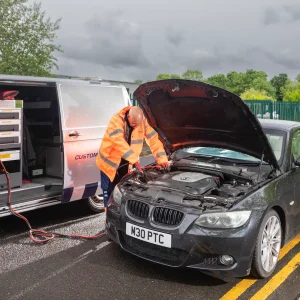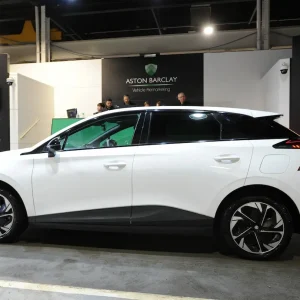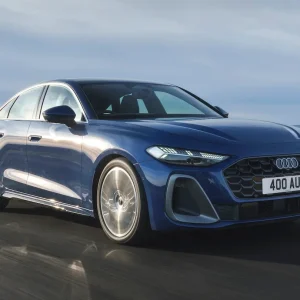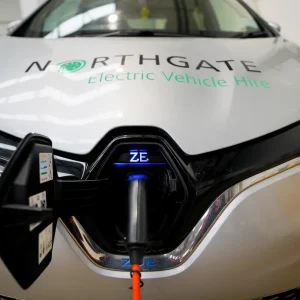Brewer tells me their commitment to customers goes back to 2018, when they put together a proposition called ‘Evolve.’ He says: “It is a proposition that we still have today. It is like an umbrella for all the help and support that we offer customers. Starting with myth-busting around EVs, we also had consideration tools for drivers. We had a ‘need’ tool, which was called ‘EV-4-ME.’ This was about who they are, their journey patterns, and whether they have a drive at home – things like that. It scored people in terms of their suitability for EVs. This was very effective at the beginning, but obviously the taxation environment has made EVs very attractive, for those paying BiK, then we saw that rapid uptake.
“Fast forward to 2022, and I think we’ve done a good job helping our customers pick the low-hanging fruit from their driver population and we’re now into the harder use cases which typically focus on the business-critical, or job need drivers’ population. We’re trying to help them, and there’s not really a silver bullet for that.
“We’ve developed a fleet transition tool, which is a detailed driver’s survey. This is something we’re working on with our customers to roll out. We have a framework that a customer with the help of our consultancy team can tailor if there are specific customer considerations. We’ve broadly arrived at 95% of a framework and a survey. We will roll that out to customers and survey the entire employee population – and potentially subsets of. That gives us a data set to work through and see why adoption in a particular use case or circumstance is challenging. We can address that with an action plan. Then it’s down to getting those drivers that can’t, because of the lack of a driveway or access to a charger – there’s quite a lot of regional inequality in the charging network. Our initial survey results have found that two people doing the same job, without a driveway, and doing 20,000 business miles a year, if one is in the south-east, they might find the charging experience a lot easier than in the North-East.”
Brewer goes on to tell me that the VWFS corporate order bank has been transformed in the past 12 months. He says: “I remember, not all that long ago, about 40% of our order bank would be battery electric vehicles (BEVs). On the car side now, we’re up to 90% and it’s almost the case that from a passenger-car perspective, we don’t seem to be taking anything other than BEVs. The few ICE we still have, will be for business-critical customers. I don’t dismiss that there are behavioural changes, even if you’re fortunate enough to have a short commute, plus workplace charging and a driveway – there’s still range anxiety! That said, the tax environment and the gulf between paying BiK at one rate versus the BEV rate, is just too big to ignore. Government plans and tax policy have driven mass adoption and it’s really a case now of manufacturers not being able to keep up with demand. Arguably that’s still true, but there are some other reasons for that, including the semiconductor situation. We have seen an absolute transformation in terms of BEV adoption in VWFS customers.
“There are more manufacturers with a greater choice of models than ever before, at a variety of different price points. It wasn’t an accident that premium products were the first electric models, as the margins were there to support the kind of investment required by the OEMs to produce BEVs. Without the scale they’ve started to have now, there is now a huge choice of options even from our own group product brands. Cupra and Skoda have a mass-market electric vehicle, Audi and Volkswagen have had one for some time. We’re also funding MG product, Kia product, Hyundai product, and those products are on choice lists, and getting good traction, including the obvious one, which is Tesla, with the Model 3 and Model Y.
“There is plenty of product available, but lead times vary hugely. I think a combination of CO2 targets for manufacturers and the fact that some of the challenger brands are now starting to emerge with product, is resulting in the situation changing. We’re optimistic for the year ahead. I don’t think we’re going to see a return to pre-WLTP 2017-2018 levels of production, but I think we’ll hopefully see some sort of recovery from the last couple of years.”
Brewer hopes that salary sacrifice schemes are a long-term solution to electrifying fleets, although he believes it requires continuity in government policy. This has not always been there in the past but has seemingly been there for a while now. He says: “I think they are a very effective way of tackling the emissions challenge in organisations. To be frank, if you’ve got a traditional company car fleet, on a contract hire product, there is no obvious advantage of moving to a salary sacrifice fleet. Where salary sacrifice plays an important part, is if you’re potentially coming out of a cash scheme, or you want to open an employee benefit for people that haven’t had access to a scheme before. This can be really effective.
“There are organisations that we’re working with that are very focussed on the wider Environmental, Social and Governance (ESG) agenda, plus some net-zero topics beyond fleet. They’re asking us in terms of employees that don’t have access to a company vehicle, for example how do we decarbonise their commute to work? Providing workplace charging, and offering a salary sacrifice scheme, are all great things that those organisations can offer.
“With the volatility in the economy, over the last two years, trying to discern any kind of trends is really, really difficult. It would be great to see data that showed cash takers coming back into company cars – or not, as the case may be. The general view was that we would see that, but registration data would suggest that hasn’t happened en masse. Then again, we know that supply has been one of the challenges of the last couple of years. There are bigger reasons why the data is the way it is, so it’s very difficult to say categorically that cash takers have come back to structured company car schemes, be it salary sacrifice or the company car scheme. I think the anecdotal evidence is that they have to a certain degree, and we do see examples of that, but whether it has happened en masse, it is difficult to say.
“I think if you still speak to the average employee/company car driver, there’s an underappreciation of the impact of their choices when it comes to personal taxation. I think there is a general lack of awareness, and we’re always trying to support customers making it top of the agenda and as transparent as possible. People could be making different, more cost-effective choices than they potentially are.”
According to Brewer, there is no average time for VWFS customers to transition to EVs, and it varies company by company. He says: “We’ve seen companies change policies almost overnight, and they have removed the ICE engine option. You’re then moving as fast as the renewal cycle will allow you – but we’re not seeing early termination of ICE contracts. I’ve not seen any customer go ‘right we’re going to take all diesel and petrol cars off the road immediately,’ even if they’re only halfway through their contract. We haven’t seen that kind of radical behaviour, it’s just not cost-effective.
“We do see people making a change from a policy that includes all powertrains to a BEV -only policy. Many people are not using hybrid as a stepping stone, either. From a production perspective, hybrid seems to be getting the least traction and there’s a few different reasons for that. One is the improved range of BEVs now – it arguably means you don’t need a hybrid option. The other one is that in some other European markets, they have had some quite good incentives around hybrid, and therefore production has been steered that way and the UK hasn’t benefitted.
Brewer thinks worries about the 2030 ICE engine ban is bigger than just chargepoints and manufacturers producing more product. He says: “Those two things will be important, but it’s going to require more innovation than that and more behavioural change. I think what we will see, is that some of the big obstacles in terms of product and charging will be delivered. Then the workforce will change dramatically. There are people doing high-mileage jobs today that I don’t think will exist in 2030. So, we’re trying to solve a problem that in some cases will be resolved by artificial intelligence or robotics removing that job from the economy altogether. World developments over the next five to seven years are going to be fascinating and will have a huge impact on resolving issues with vehicles and mobility.”





